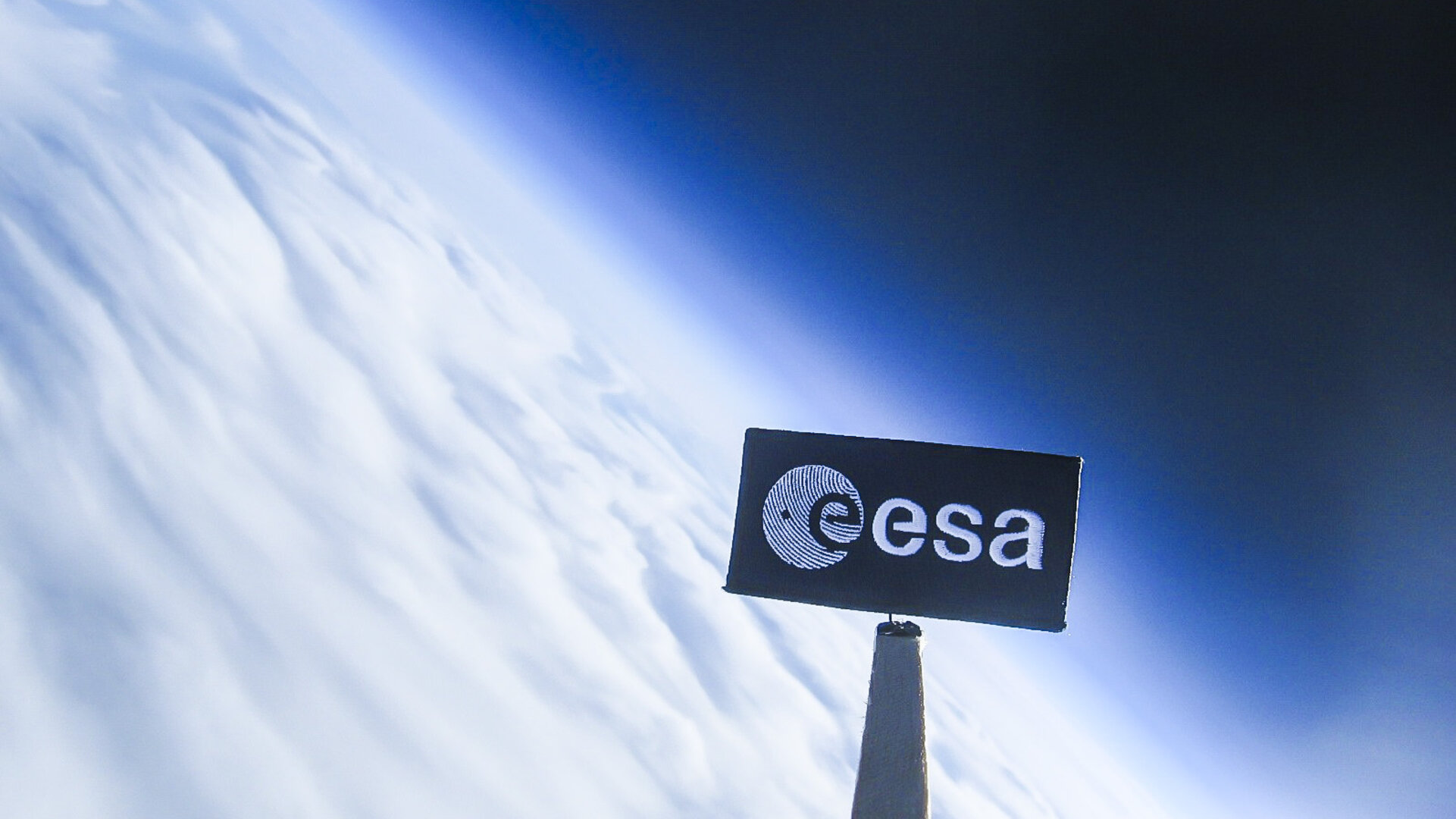ESA ascending to stratospheric heights
Already astronomically well-travelled, ESA’s logo has now reached the edge of space. It is seen here 34.6 km up, aboard a weather balloon testing parachute designs for future Mars landings.
With the Red Planet’s atmosphere around a hundred times thinner than Earth’s, the terrestrial stratosphere makes a workable match for Mars. Once the helium-filled balloon bursts – shortly after this snap was taken – the parachute can begin its fall back to Earth.
Its flight is carefully monitored using cameras, GPS, accelerometers, rate gyros and environmental sensors.
This photo came from a series of test flights performed by UK company Vorticity Ltd, specialising in entry, descent and landing systems for space vehicles.
Based in Oxfordshire, the company has contributed to a variety of space missions, most notably designing the parachute system that landed ESA’s Huygens probe on Titan.
These balloon flights are part of an ESA contract with Vorticity to study the best options for subsonic parachutes to land on Mars, backed through the Agency’s Basic Technology Research Programme for promising new engineering concepts.
A two-parachute approach provides the best weight efficiency for a Mars landing. With the first parachute deploying at supersonic velocity, a ‘disk-gap-band’ parachute is the standard, incorporating an open ring to allow air to pass through. This design has been used for all successful Mars missions since the 1970s Viking landers.
The best choice for the subsonic parachute remains open, however. This project aims to determine the optimum parachute type for subsonic descent, making use of flight-tests to see how candidate parachutes inflate and then fly down to the ground.
Because of the way meteorology balloons operate, a secondary payload is required on the way up. This gave local schools the chance to fly small scientific payloads up to the stratosphere.
This ESA patch was flown on 22 January as part of one such payload contributed by Sponne School in Towcester, captured by one of the package’s cameras just south of Bicester in Oxfordshire just before the balloon burst.





